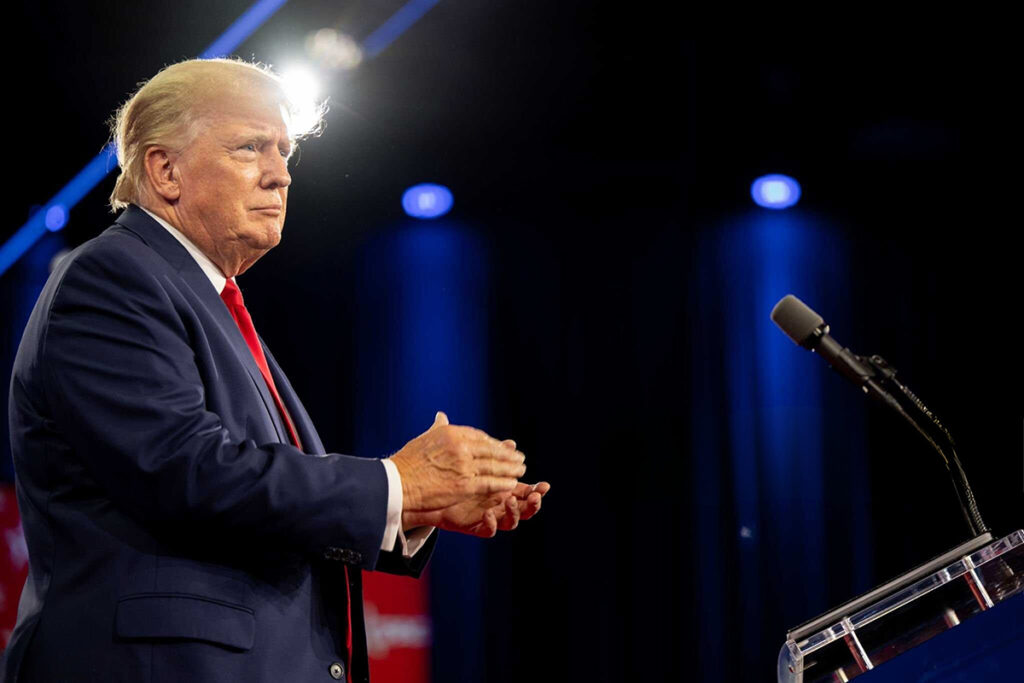The potential for a major trade conflict is rising as former President Donald Trump has threatened to impose 25% tariffs on all goods from Canada and Mexico starting February 1. Citing inadequate border security as justification, this move could have widespread economic consequences across North America, disrupting supply chains and pushing Canada and Mexico into economic downturns.
Such tariffs would not only harm North American trade relations but also raise costs for American consumers. Essential imports such as cars, gasoline, and raw materials would see price hikes, affecting businesses and households alike. The Federal Reserve might also feel pressure to maintain high interest rates, making mortgage relief less likely and further slowing economic growth. Despite these risks, financial markets remain cautiously optimistic, as many experts believe this threat is a negotiation tactic rather than a definitive action.
Uncertainty in Trade and Economic Stability
The prospect of a North American trade war could have severe long-term consequences. Over the past few decades, Canada, Mexico, and the United States have developed a highly integrated trade network, where industries—particularly automobiles, energy, and manufacturing—rely on cross-border cooperation. Disrupting these supply chains with steep tariffs would result in economic contraction, job losses, and inflation in all three countries.
Goldman Sachs estimates that there is only a 20% chance Trump will proceed with these tariffs, highlighting past instances where similar threats were never enacted. The move could be intended to accelerate discussions on renegotiating the United States-Mexico-Canada Agreement (USMCA), which is due for review in July 2026. If negotiations begin earlier, Trump may use tariff threats as leverage to secure more favorable trade terms.
Higher Gas Prices and Energy Costs
One of the most immediate effects of imposing tariffs would be on fuel prices. In 2023, 71% of US oil imports came from Canada and Mexico, making them crucial suppliers for American energy needs. If tariffs are applied to oil imports, gasoline prices could rise by 20 to 50 cents per gallon, particularly in regions most reliant on Canadian crude, such as the Great Lakes, Midwest, and Northeast.
This increase in fuel costs could also impact transportation, logistics, and production costs, driving up prices across multiple sectors. Trump has previously promised to lower gas prices below $2 per gallon, but tariffs on oil imports would likely push costs in the opposite direction. The economic burden would fall heavily on consumers and businesses, further complicating Trump’s economic agenda.
The Auto Industry Faces Major Disruptions
The North American auto industry is one of the most vulnerable sectors in the event of a trade war. Automobiles and parts move across borders multiple times before final assembly, meaning tariffs would increase production costs at every stage. Industry analysts estimate that the price of a new car in the US could rise by $3,000 due to these added costs.
Such an increase would slow consumer demand, reduce car sales, and impact jobs across the sector. US automakers rely heavily on Canadian and Mexican manufacturing to remain competitive in global markets. Any disruption to this system could make American cars less affordable and less competitive internationally, hurting the industry’s long-term growth.
Mexico and Canada Prepare to Retaliate
The potential economic damage from these tariffs extends beyond the US, with Mexico being the most at risk. Exports to the US make up over 25% of Mexico’s GDP, meaning a 25% tariff would likely push the country into a severe recession. This economic downturn could also increase migration pressures at the US border—contradicting the very reason Trump cites for imposing the tariffs.
Canada has also signaled strong opposition and is preparing a list of retaliatory tariffs targeting US-made products, including steel, orange juice, and alcoholic beverages. If these countermeasures escalate, the risk of a prolonged tit-for-tat trade conflict increases, further straining diplomatic and economic ties between the three nations. As businesses and investors await clarity, the uncertainty surrounding these tariff threats continues to cloud North America’s economic future.


